Artist Marcus Jackson’s portfolio is focused on life and death, in an arctic environment that is fast disappearing. See more of his work by visiting his website.
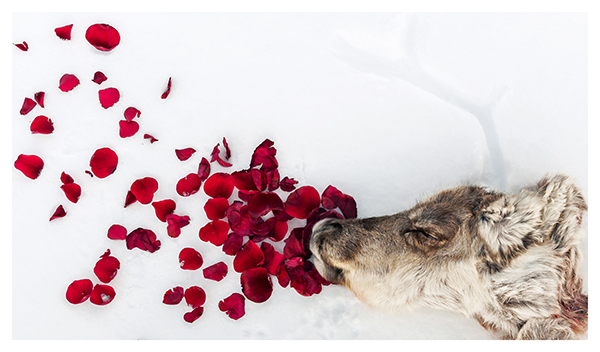
Memory of Tomorrow, Digital Photograph, 25”x 14”
I haven’t always been interested in dead animals. My obsession didn’t really start until I was mid-way into my thirties. In seventh grade science class I had refused to dissect a rat because I couldn’t stomach cutting into an actual animal whose sole purpose for existing was to allow me to cut into it with a dull scalpel and examine its organs.
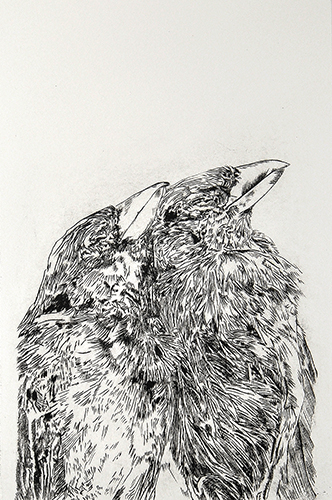
“Dead Love – House Sparrows” Drypoint, 6.125”x 9.5”
I’d never held a wild animal still warm and caked with the musty scent of the forest until I gathered a broken coyote off the side of a rural highway. She was my first and how I got my nickname: Marcus “Dead-dog” Jackson.
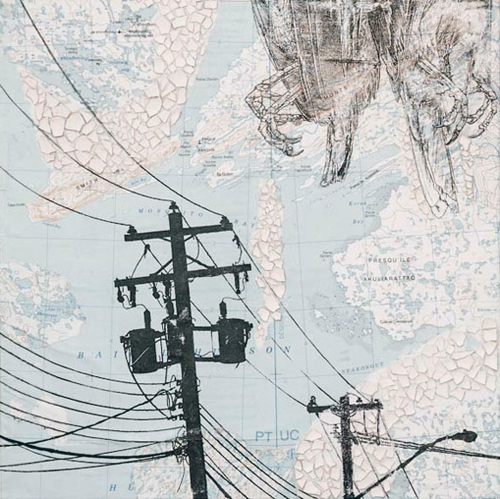
Lost in Migration #3, mixed media, map, eggshell, image transfer, 12”x 12”
I’ve felt compelled to try to re-create that experience in order to examine my response to animal deaths caused by humans. I am interested in the intersections where humans and animals meet and how those interactions end. But even beyond that I find there is something beautiful and tragic about the corpse of a wild animal. Documenting animal deaths is my attempt to simultaneously memorialize the wilderness and the ethical and moral evolution of humans and their relationships with other species.
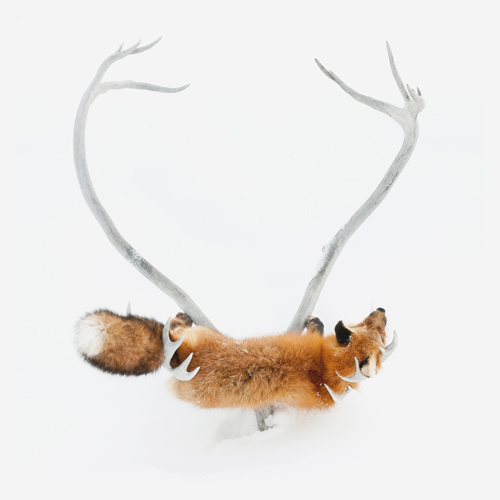
‘Winter Salvation’ Digital Photograph, 16”x 16”
I work primarily as a traditional print maker creating each and every print by hand. I work mainly in an intaglio process known as drypoint, where I create plates by scratching lines into plexi-glass with an etching needle. Relief and silkscreen are the other two processes I most often use to make prints.
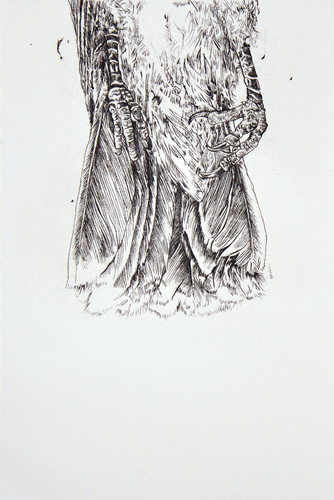
“Dead Love – Eastern Kingbird” Drypoint, plate 5.75” x 9.5”
My other work is primarily collage or assemblage created from a combination of man-made and natural materials. I source most of my art supplies for collage from the thrift stores or from the local dump. The natural materials are mostly scavenged from road kill or found in nature.
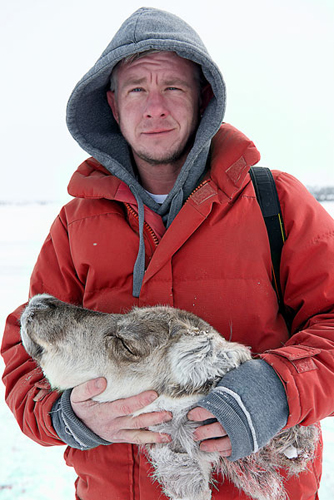
Artist Marcus Jackson salvages a caribou head left behind by hunters on Lockhart Lake in Northwest Territories, Canada. Photo by Kyle Thomas.
Beyond printmaking, I am an avid photographer and spend a large portion of my free time outdoors on the land. The arctic is a place of rugged beauty and I draw a lot of inspiration from the environment, people and cultures that are present here.
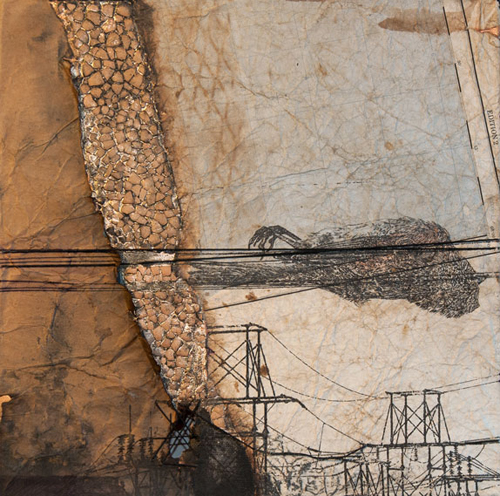
“Precious Commodity #2” Mixed media, map, eggshell, linen thread, image transfer, 12”x 12”
The arctic is at risk of disappearing. The ice, cultures, languages, animals, and environment are all at risk and I feel obligated to document what I can while I am here. The land is filled with stories and Death is often a character in an arctic narrative. For me, death is a corporeal record of history inscribed within and upon the body.
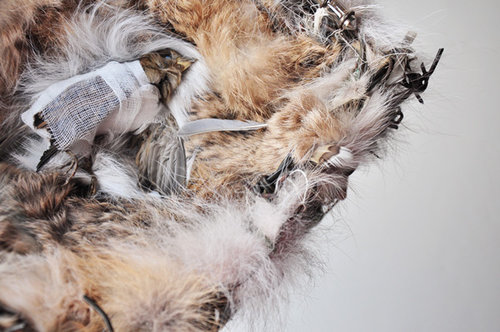
“Interference” assemblage of found objects, barbed wire, fur, house sparrow, 12”x 12”x 10”
The corpse of a wild animal is more than simply an empty spirit-vessel, it is the exquisite tablet from which the story of an animal’s life can be read.
Marcus Jackson invites you to follow him on Facebook.

This is great and even as a friend and personal photographer I learned a bit more about Dead-dog.